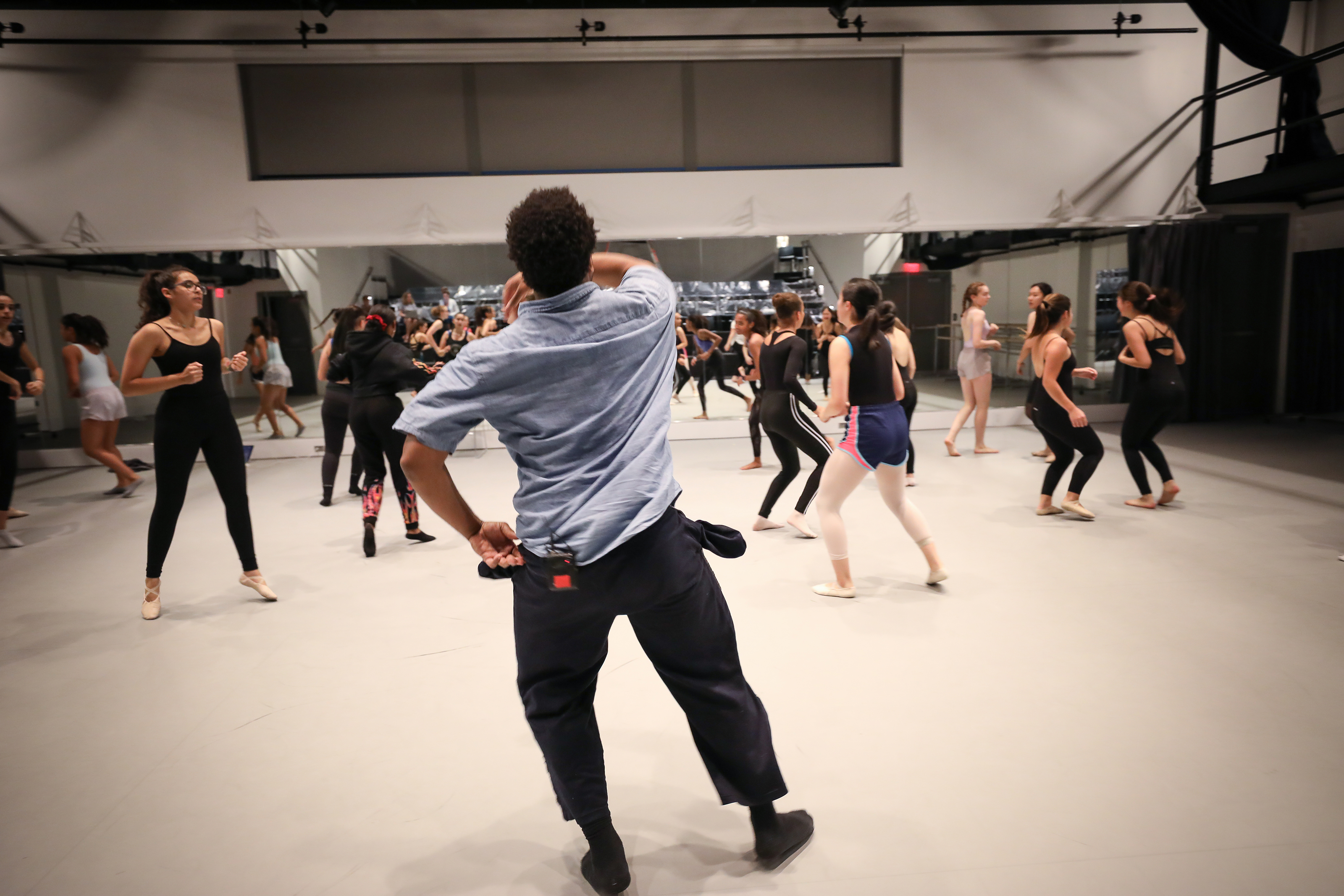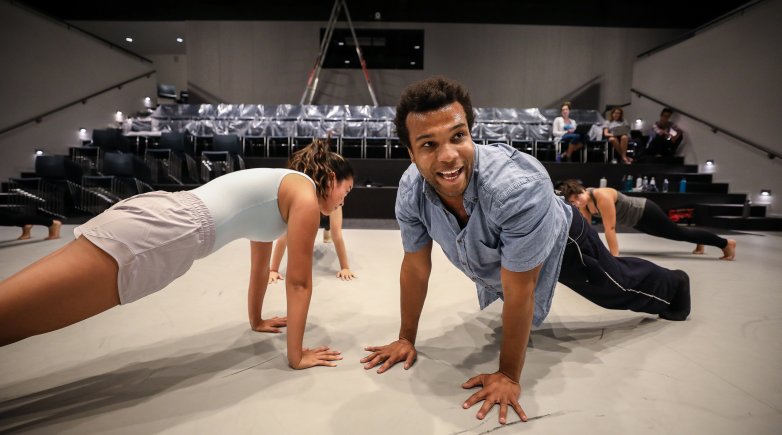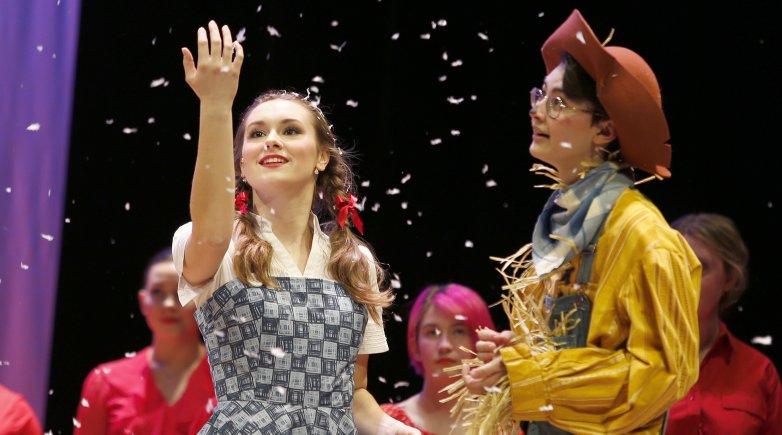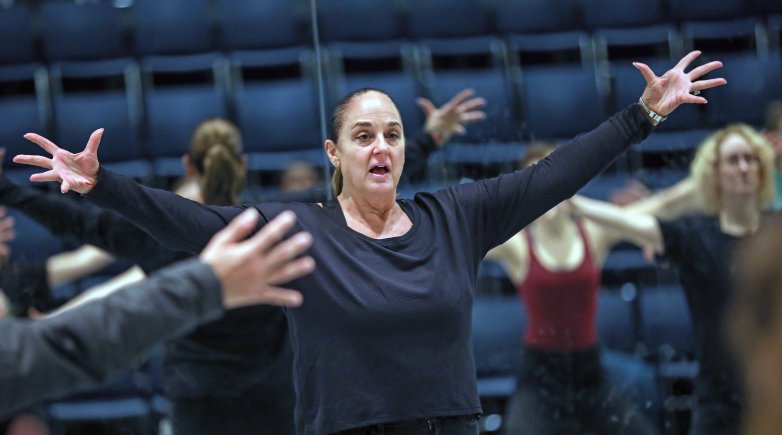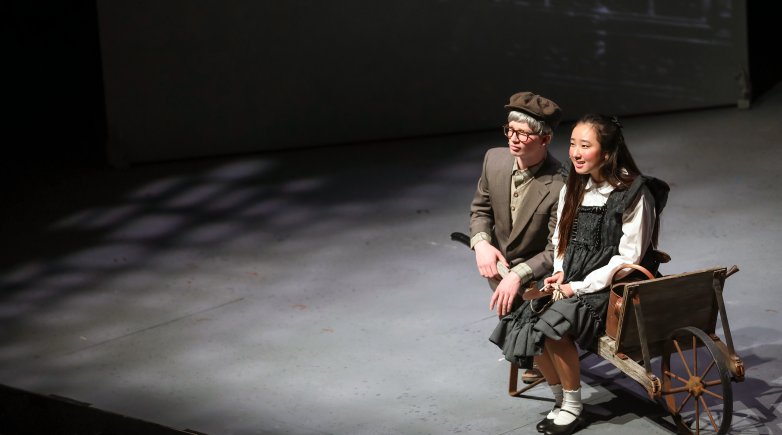Alumnus puts dancers through their paces
Curtis Thomas '09 returns to help Exeter's Fall Dance Company "find moments of float."
On a warm, late-fall Monday, members of the Fall Dance Company stream into a third-floor studio at the David E. and Stacey L. Goel Center for Theater and Dance. The windowless space, with its sprung floors, high ceilings and long mirrored wall, is elegantly simple; it’s soon humming with youthful energy. Company dancers, hair pulled back and dressed to move in black leotards, shorts or sweats, pull off their shoes as they enter. The risers in back of the studio are soon littered with water bottles, backpacks and stray pairs of sneakers. Students greet each other, chatting happily; several step onto the floor to stretch.
At 4:15, Director of the Dance Program Allison Duke, standing at the front of the room with a visitor, smiles and asks, “Did everyone have a good weekend?” As the students respond, they glance in anticipation at their visitor, Curtis Thomas ’09, a professional dancer and choreographer who is teaching today’s master class. Dressed in loose-fitting sweatpants and a short-sleeved shirt that hint at his muscled physique, Thomas bounces lightly on his toes as Duke introduces him. They met in a local dance studio when Thomas was an upper at Exeter. His voice reveals a slight trace of his native New Orleans as he greets the class warmly and tells the dancers a little about himself. A graduate of the Boston Conservatory at Berklee, he recently moved from Nashville to New York City; he’s just been named assistant choreographer for the traveling production of the Broadway musical Waitress, an announcement that draws an appreciative murmur from the students.
Introductions over, class begins. As the dancers fan out to warm up, Thomas cues up rhythmic music on his laptop. He asks the dancers to walk “in a mindless but purposeful” circle around the room, carving paths around one another. Soon, the room is quiet except for the soft slaps of 20-plus pairs of pacing feet. “Check in with what you see around you, the colors and shapes that exist,” Thomas urges. “Allow the bottom of your feet to absorb the floor beneath you.”
As the students weave fluidly in, out, and around him, Thomas walks them through other movements, asking them to consider the relationship between their bodies and each other, as well as the space around them. One exercise has the dancers “rewriting” the room by leaping, twisting, reaching, bending and rolling across the room. It’s at once chaotic, spontaneous and beautiful.
After a short break, Thomas cues up new music as the dancers line up in small groups on one side of the room. The students, all intermediate and advanced dancers, reflect a cross-section of dance styles: ballet, jazz, contemporary, hip-hop, even K-pop and Bollywood. Thomas encourages them to use as much physicality as possible, to stretch themselves figuratively and literally. “Consider every part of your body and think about what you’re doing with the sides of your body,” he says. “That’s as important as everything happening from the front.”
He hops into an elegant partial handstand, suggesting the dancers try it. They’re not all sure about the move, but Thomas gently urges them on. “Anchoring into the ground allows us to pour weight into our hands, forearms and back. Then we find moments of float,” he says. He asks the dancers to imagine what it feels like to have air under their arms as they lift them or under their feet as they stretch out their legs.
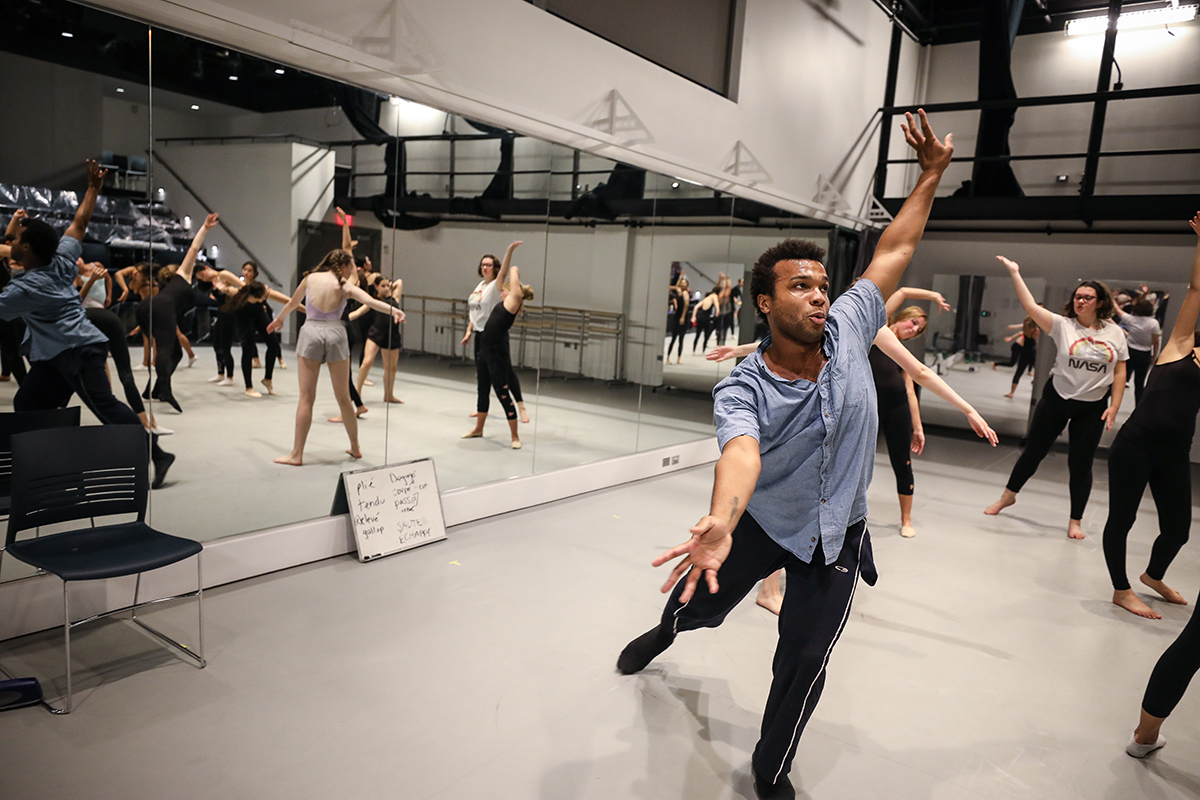
The dancers have an opportunity to test the float and air concepts during a falling exercise (“I love the drama of a good fall,” Thomas says, smiling). He fluidly leads the dancers across the floor, demonstrating how he wants them to “take your whole spine for a ride.” One step, then two, then three, four, five, six, the dancers glide across the floor. Duke, observing from the back of the room, smiles and whispers to Dance Instructor Amberlee Darling, “Very different from a drag.”
Thomas emphasizes this full use of movement, from outstretched hands to pointed toes, for the remainder of class. Students question Thomas about tempo and technique. During one dance sequence, he likens the steps to reaching for a baseball and drawing it in. The dancers move in front of the mirrors, stretching, reaching, dipping, executing piqué turns into one-legged relevés. “Beautiful,” Thomas says, clapping.
During a water break, he discusses the importance of breathing. “Breathing will change your dancing,” he says. He again stresses the visual impact of full-body movement, telling them not to worry about getting every step correct. “Use every single angle of the room. How much attention can you give to the top of your head and to the arch of your foot as you navigate the material?” he asks. “It changes the movement into a three-dimensional experience where we’re not worried about what’s happening.”
During the final dance sequence, set to a song appropriately called “Come as You Are,” Thomas tells the dancers to cross the floor “investigating anything you like … be yourself.” After more than an hour of intense focus and movement, the girls take to the floor joyously, leaping, rolling, and twisting across the space.
Thomas ends the class to a round of applause and the students circle him on the dance floor as Duke snaps a photo. There’s a rush of activity as students grab their things and scatter. A few dancers stay behind to talk to Thomas and Duke; several linger, practicing turns and leaps. The studio quiets, awaiting its next act.
